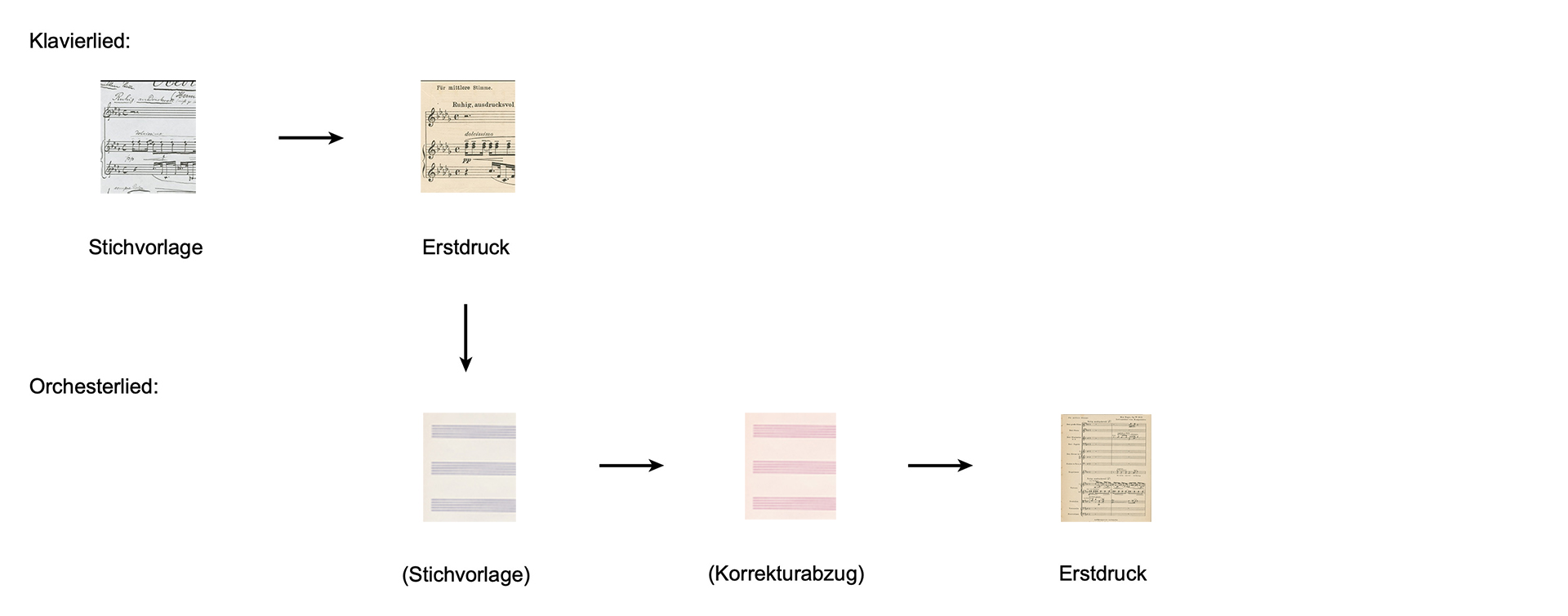Aeolsharfe op. 75 No. 11
Version for medium voice and orchestra
-
Aeolsharfe
Text: Hermann Ritter von Lingg
- -
- Eighteen Songs op. 75 for voice and piano
- -
1.
| Reger-Werkausgabe | Bd. II/6: Lieder mit Orchesterbegleitung, S. 78–85. |
| Herausgeber | Christopher Grafschmidt, Claudia Seidl. Unter Mitarbeit von Knud Breyer und Stefan König. |
| Verlag | Carus-Verlag, Stuttgart; Verlagsnummer: CV 52.813. |
| Erscheinungsdatum | September 2023. |
| Notensatz | Carus-Verlag, Stuttgart. |
| Copyright | 2023 by Carus-Verlag, Stuttgart and Max-Reger-Institut, Karlsruhe – CV 52.813. Vervielfältigungen jeglicher Art sind gesetzlich verboten. / Any unauthorized reproduction is prohibited by law. Alle Rechte vorbehalten. / All rights reserved. |
| ISMN | 979-0-007-30199-6. |
| ISBN | 978-3-89948-446-5. |
Aeolsharfe
Hermann Ritter von Lingg: Aeolsharfe, in:
Hermann von Lingg: Gedichte, vol. 2, Verlag der J. G. Cotta’schen Buchhandlung, Stuttgart
[Probably] Hermann Ritter von Lingg: Aeolsharfe, in: Die Musik-Woche, 3. Jg. (1903), issue 44 (4. November-Woche), p. 431.
Copy shown in RWA: DE, Karlsruhe, Max-Reger-Institut/Elsa-Reger-Stiftung, G.
Note: In Erstausgabe innerhalb der Sektion Eine Idylle in Liedern.
Note: Die Komposition entstand in zeitlicher Nähe zur Publikation des Gedichts in der Musikwoche. Reger publizierte selbst in der Zeitschrift und hatte sie sehr wahrscheinlich auch abonniert.
1. Genesis
Publication
When Reger conducted the Meiningen Orchestra in four of his Schlichte Weisen songs as orchestrated by Richard Sahla on 22 and 25 November 1913 in Eisenach and Meiningen respectively,1 his own Schubert arrangements were presumably still fresh in his mind, as he had corrected their proofs in October. This experience might well have been what prompted him to begin orchestrating his own songs. To begin with, Reger chose two of his most popular songs, Aeolsharfe op. 75 no. 11, and Das Dorf op. 97 no. 1. He continued to use his most popular songs for all his subsequent orchestral arrangements. We have no details about the arranging process. It is possible that Reger set to work just after the last concert in his current series with the Court Orchestra, on 15 December; in any case, he wrote that he “had a miserable amount to do” at this time. (Postcard to the Stein family of 21 December 1913)
Reger surprised his publisher Bote & Bock with these two orchestral arrangements on 22 December (Bote & Bock being the legal successor of Lauterbach & Kuhn, who had published the original songs). He recommended both a space-saving layout for the score, and the use of the cheaper method of producing orchestral parts from manuscript. He also asked for the works to be published swiftly: “We need these two songs soon, so I should be very grateful if you would engrave the two manuscripts straightaway. And it would then be extremely important for me to receive the proofs of the two small scores no later than 20 January [1914]. I would make the corrections as quickly as possible, meaning that the score and all the orchestral parts could easily be published by 20 February, by which time we will absolutely need these two songs.” (Letter) He had a rehearsal with the Meiningen Court Orchestra scheduled for that day, and wanted them to begin working on his two orchestral songs. (See letter of 24 December 1913 to Hugo Bock) Reger sent the corrected proofs back to his publisher on 28 January 1914, together with the manuscripts. (See letter) The two songs were published together in February 1914.
2.
Translation by Chris Walton.
1. Early reception
While Reger clearly intended including these songs on his programme with the Meiningen Court Orchestra,1 his collapse in late February 1914 and his subsequent health cure meant that this plan fell through (see op. 136, Composition).2 There is no record of these two orchestral songs having been performed at this time.3 When Olga Blomé performed them both on the occasion of Reger’s 50th birthday, accompanied by the orchestra of the Landestheater Stuttgart under Carl Leonhardt (together with Aus den Himmelsaugen op. 98 no. 1 and Glück op. 76 no. 16, see below), a local critic noted “a certain ‘mood’, though this is not difficult to achieve with the colouristic means available; we again liked the Aeolsharfe best, where Reger also relies on a good poet (Lingg)”4.
2.
Translation by Chris Walton.
1. Stemma

2. Quellenbewertung
Der Edition liegt als Leitquelle der Erstdruck zugrunde. Als Referenzquelle wurde der Erstdruck des Klavierlieds herangezogen, in seltenen Fällen auch dessen Stichvorlage, die Reger zum Zeitpunkt der Bearbeitung jedoch nicht vorlag.
3. Sources
- Stichvorlage
- Erstdruck
- Erstdruck
Object reference
Max Reger: Aeolsharfe op. 75 No. 11, in: Reger-Werkausgabe, www.reger-werkausgabe.de/mri_work_01109.html, version 3.1.5, 28th November 2025.
Information
This is an object entry from the RWA encyclopaedia. Links and references to other objects within the encyclopaedia are currently not all active. These will be successively activated.